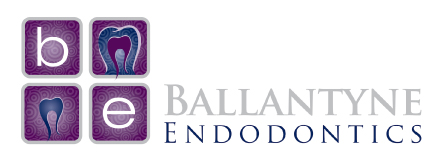What to Expect During An Internal Bleaching Treatment?
If you have a discolored tooth that won’t respond to traditional whitening, you may be curious about internal bleaching treatment.
You’re right to explore this idea! When a tooth becomes discolored from trauma or a root canal, regular external tooth whitening treatments won’t work. Instead, only internal bleaching can help.
This article isn’t a substitute for personalized advice from a dentist or endodontist. We hope you find it informative as you explore your options and discuss them with your dental professional.
About Internal Bleaching
An internal bleaching procedure is a teeth whitening process normally performed on a previously root canal treated tooth and/or a tooth that has undergone trauma.
There are a few reasons this can happen. Sometimes bacteria, blood, or saliva remain inside the tooth after a root canal procedure. As the bacteria break down, discoloration develops. In this case, internal bleaching is the only option.
Basically, internal bleaching is a procedure that targets discoloration from the inside out. That way you can make sure those pearly whites are white again!
The Difference Between Internal Bleaching and External Bleaching
External bleaching is the method most people are familiar with. The dentist may apply bleach to bleaching trays or possibly use a laser to whiten the teeth. Another option is where the dentist sends the patient home with custom whitening trays for at-home treatment.
External bleaching whitens the surface of the teeth. Usually, the procedure applies to all the teeth.
On the other hand, internal bleaching targets a single tooth, or maybe a few specific teeth, that were discolored due to a root canal or trauma. During this internal bleaching procedure, the tooth is whitened from within. It is a more invasive process, compared to external tooth whitening.
How Internal Bleaching Works
If you aren’t satisfied with the appearance of your tooth after trauma or a root canal, when it comes to its color, speak with your dentist.
To start, your endodontist will conduct an exam and might do some imaging to get a clear picture of the source of the discoloration and whether internal bleaching is your best option. Sometimes the source of the discoloration is bacteria, in which case a root canal or retreatment of an old root canal is needed prior to bleaching.
If internal bleaching is right for you, the endodontist will drill a tiny hole in the back of the discolored tooth. Next, they will place a bleaching agent inside the coronal portion of the tooth.
The bleach crystals are left in the tooth for as little as 30 minutes or for up to several days, depending on the severity of the discoloration. Some call the first (shorter) method a “chairside bleach” and the second (longer) a “walking bleach.” Afterward, your provider removes the bleach crystals and fills and reseals your tooth.
Internal bleaching is a low-risk procedure, though some patients may experience some increased sensitivity or tenderness afterward. As always, discuss any concerns you may have with your provider.
Most people love the way their tooth looks after internal bleaching, especially if they felt self-conscious about the tooth’s discoloration. Being able to laugh, eat, sing, and smile without embarrassment is such a joy.
But ultimately the choice is yours! We believe in empowering our patients to live a life of wellness and balance.
Advantage and Disadvantages of Internal Bleaching
Like every procedure, internal bleaching has pros and cons which might make it suitable for some patients and situations, but not others.
Advantages to internal bleaching include:
- It’s a safe and effective way to whiten even a dead tooth.
- The process is simple and fairly inexpensive compared to some other cosmetic treatments.
- It doesn’t require anesthesia.
- Internal bleaching preserves more of the tooth’s natural structure, unlike a veneer, so it doesn’t further weaken the tooth.
- It can help you feel more confident about your smile.
Disadvantages to internal bleaching include:
- Depending on the severity of the discoloration, it may take multiple treatment sessions to reach the desired level of whiteness.
- The bleached tooth may not match your other teeth exactly. Often, it is initially a little whiter than the surrounding teeth.
- Results sometimes last around one year so maintaining your tooth’s whiteness may require follow-up treatments.
- It is an invasive procedure, at least when compared to external whitening, since a small hole is drilled into the tooth.
If you are considering internal bleaching, have a frank conversation with your dental professional. Understanding your options and making informed decisions is a great position of strength to start from when it comes to your health. Ask about what you can expect based on your endodontist’s own professional experience.
Maintaining Your Results from Internal Bleaching
Since internal bleaching typically lasts a year or so, you may need repeat treatments to maintain the results. Talk with your provider about this so you are able to make an informed decision and plan ahead.
In addition, speak with your provider about what you can do to maintain your overall oral health, so you can minimize the likelihood of future tooth trauma or needing another root canal. Here are some steps you can take:
- Brush your teeth twice daily with a soft-bristled toothbrush and fluoride toothpaste.
- Floss your teeth daily.
- Consider wearing a mouthguard at night if you grind your teeth.
- If you play contact sports, consider wearing a mouth guard to protect your teeth from impact.
- Visit your primary dentist on a recommended schedule for an examination and cleaning. Depending on your history and oral health, that exact schedule may vary.
- If your dentist or endodontist has different advice for you that is tailored to your specific situation, always follow that advice.
- Discuss any pain, new or worsening symptoms, or questions with your dentist.
Next Steps: Schedule a Consultation or Exam
Charlotte residents trust Ballantyne Endodontics to save their natural teeth, perform their internal bleaching procedures, and restore healthy balance to their mouths.
We strive to treat the whole person and provide compassionate care. In fact, our founder, Dr. Sonia Chopra, knows firsthand what it is like to need endodontic care! When she says she understands your situation and has been there, it is true! Her experience as a patient led her to this profession, and she and all the doctors and staff treat all patients with compassion.
If you need a root canal, retreatment, or other endodontic treatment ask your dentist for a referral or call us to schedule a consultation.

